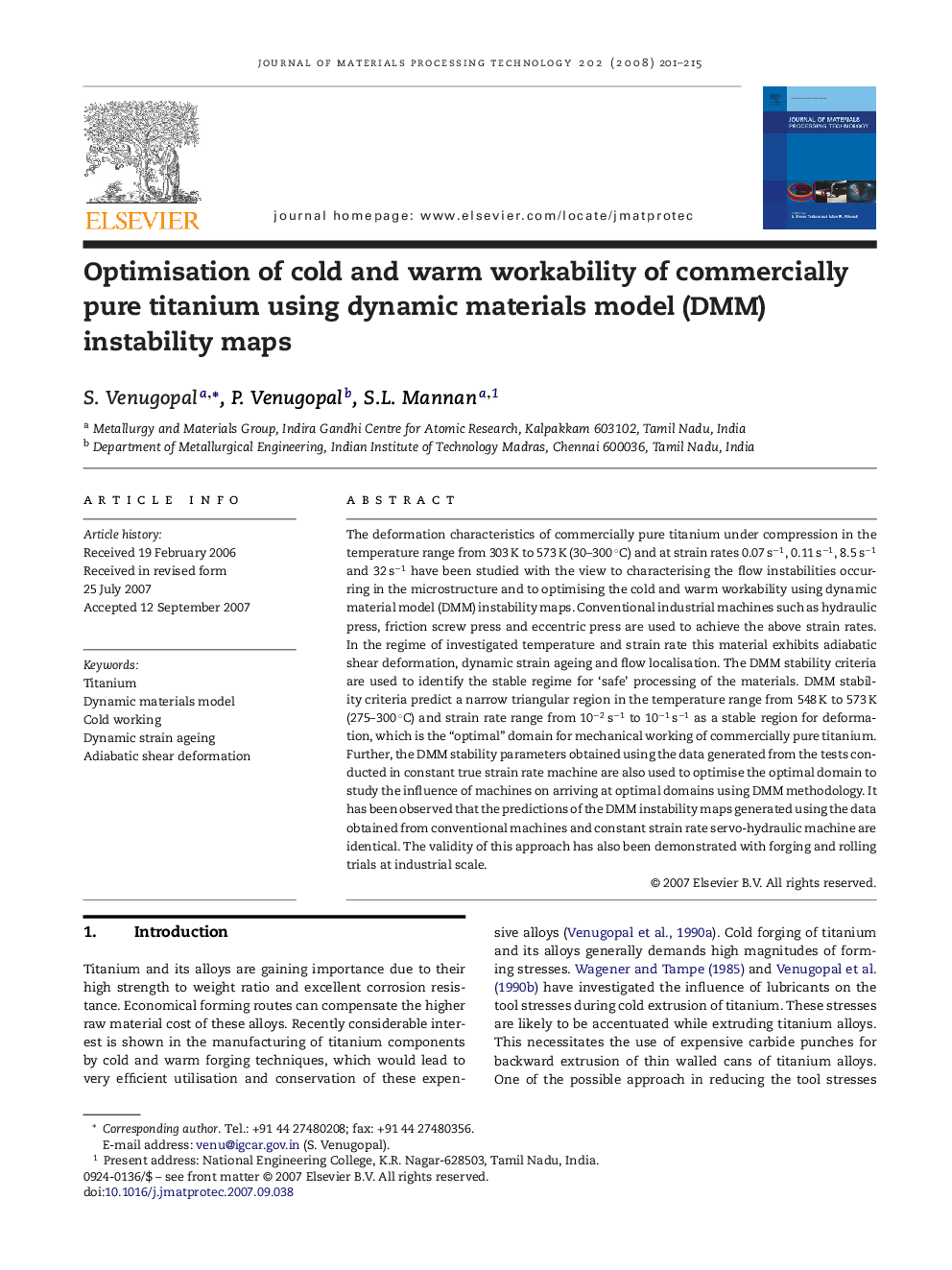| Article ID | Journal | Published Year | Pages | File Type |
|---|---|---|---|---|
| 795432 | Journal of Materials Processing Technology | 2008 | 15 Pages |
The deformation characteristics of commercially pure titanium under compression in the temperature range from 303 K to 573 K (30–300 °C) and at strain rates 0.07 s−1, 0.11 s−1, 8.5 s−1 and 32 s−1 have been studied with the view to characterising the flow instabilities occurring in the microstructure and to optimising the cold and warm workability using dynamic material model (DMM) instability maps. Conventional industrial machines such as hydraulic press, friction screw press and eccentric press are used to achieve the above strain rates. In the regime of investigated temperature and strain rate this material exhibits adiabatic shear deformation, dynamic strain ageing and flow localisation. The DMM stability criteria are used to identify the stable regime for ‘safe’ processing of the materials. DMM stability criteria predict a narrow triangular region in the temperature range from 548 K to 573 K (275–300 °C) and strain rate range from 10−2 s−1 to 10−1 s−1 as a stable region for deformation, which is the “optimal” domain for mechanical working of commercially pure titanium. Further, the DMM stability parameters obtained using the data generated from the tests conducted in constant true strain rate machine are also used to optimise the optimal domain to study the influence of machines on arriving at optimal domains using DMM methodology. It has been observed that the predictions of the DMM instability maps generated using the data obtained from conventional machines and constant strain rate servo-hydraulic machine are identical. The validity of this approach has also been demonstrated with forging and rolling trials at industrial scale.
